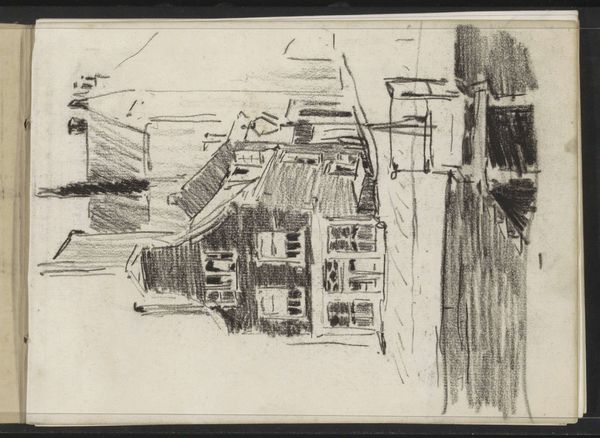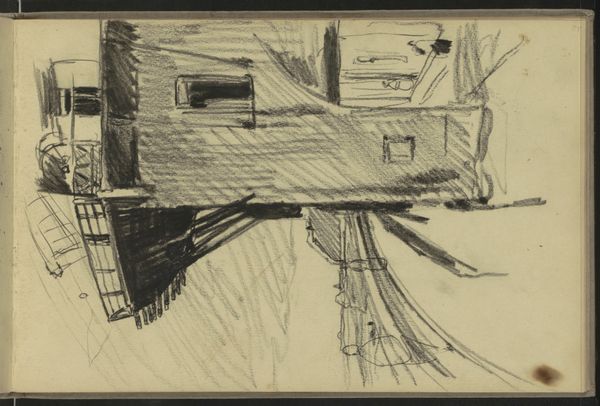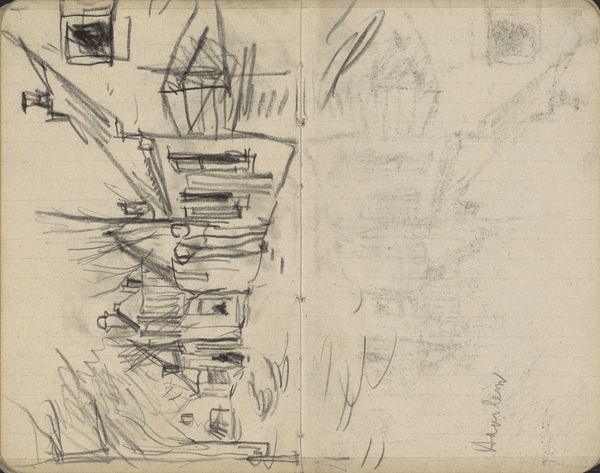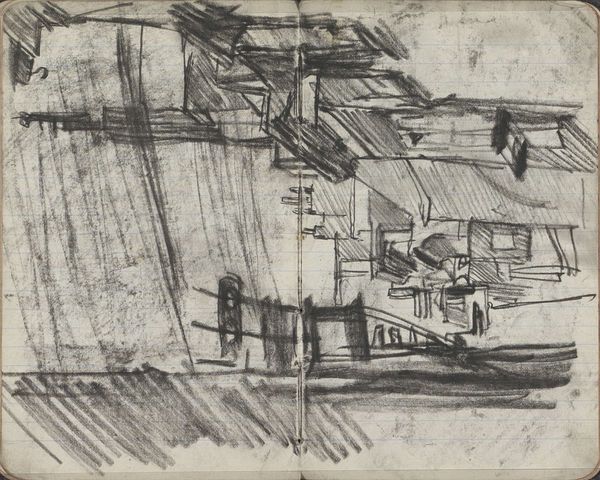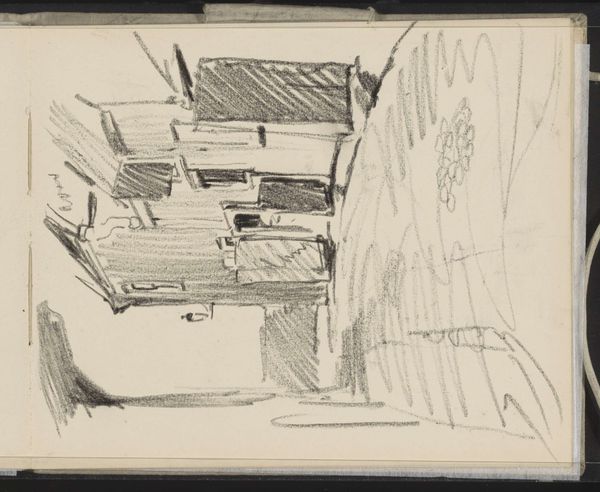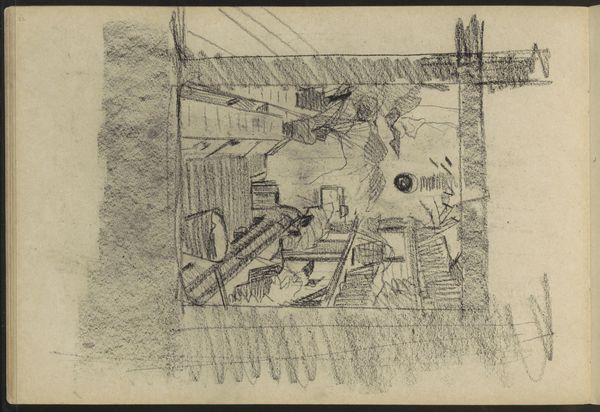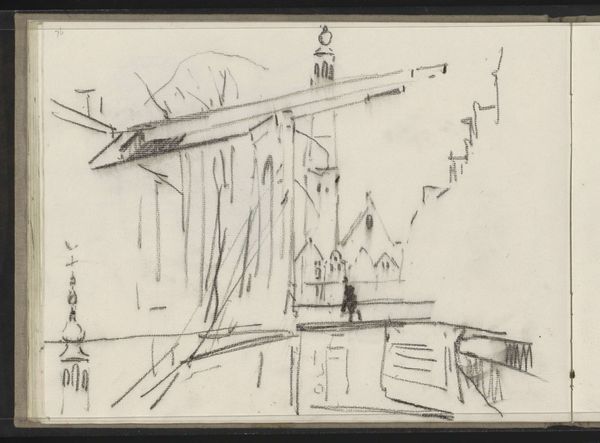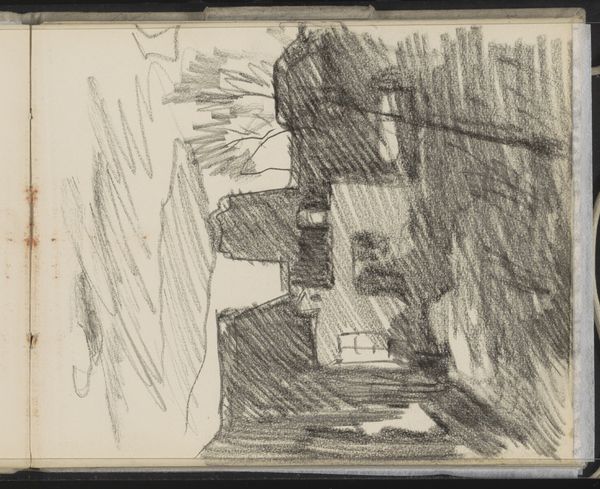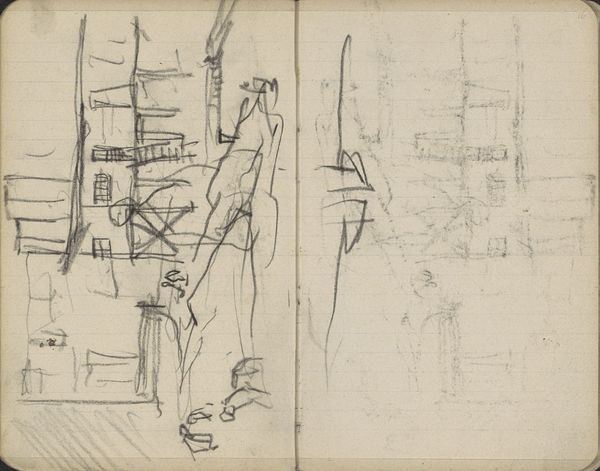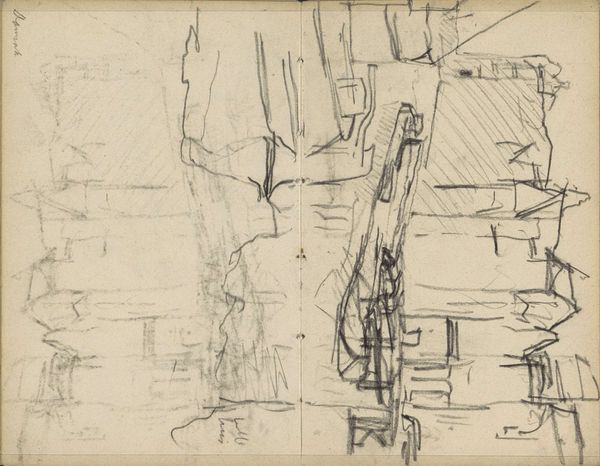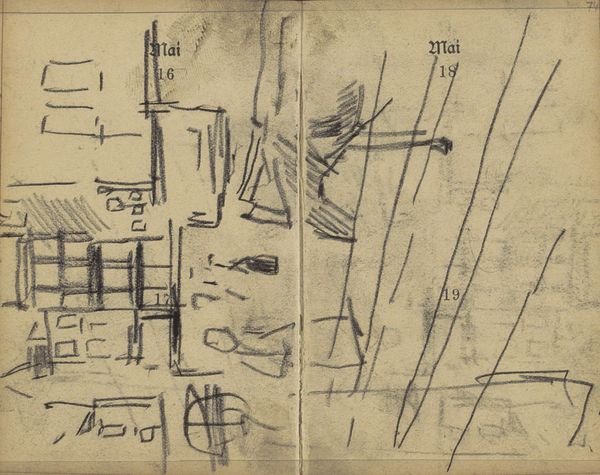
Copyright: Rijks Museum: Open Domain
Curator: Willem Witsen created this pencil and graphite drawing, "Aanlegsteiger met boten aan het Damrak te Amsterdam," sometime between 1904 and 1905. It captures a scene from Amsterdam’s Damrak, and the work resides here at the Rijksmuseum. Editor: My initial impression is a quiet one. It’s mostly monochromatic and quickly rendered—almost fleeting, like catching a glimpse of something out of the corner of your eye. It makes me wonder what the space was used for and who moved through it. Curator: Absolutely. Witsen was known for capturing Amsterdam cityscapes, reflecting the rapid industrialization and urbanization of the era. His works often emphasize the changing urban environment and the social transformations underway. Think of it in the context of labor conditions for dockworkers, access to waterfront spaces, and the overall evolution of Amsterdam as a commercial center. Editor: Yes, seeing this work in context raises a number of important points: Who had access to this waterfront? The sketch seems to portray it as a somewhat empty space; I’d love to explore the complex power dynamics influencing urban planning at that moment in Dutch history. I wonder if Witsen's composition itself holds commentary on marginalized waterfront communities. Curator: I'd argue that Witsen gives us, through this rapid technique and specific subject matter, a slice of life—an attempt to legitimize working-class quarters. Of course, you're correct, that this invites reflection on the historical accessibility to this specific waterside of the Damrak and how economic divides affect urban landscapes. Editor: What do you think Witsen might have intended when capturing this view in sketch form? The deliberate choice of the informal suggests his deep connection with everyday life—which begs questions of ownership, surveillance, and how "daily life" differed wildly by class. Curator: Given the era, the artist provides, to me, something close to documentation, like a journalist’s field notes. Yet his style gives us access to his particular sensibility toward social dynamics within the city. Editor: This sketch feels relevant to modern concerns surrounding the tension between progress, class, and place, revealing complex interplays of how humans share spaces within ever-shifting systems. Curator: It gives us much to ponder about the transient nature of urban experience, wouldn’t you say?
Comments
No comments
Be the first to comment and join the conversation on the ultimate creative platform.
